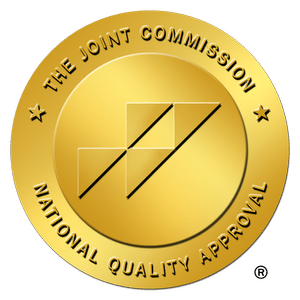What Is PTSD?
Post Traumatic Stress Disorder (PTSD) can lead to lasting changes in the brain and nervous system. Without treatment, it may prevent you from living a full life. It affects approximately 3.5 percent of U.S. adults every year or about 9 million individuals. For many trauma sufferers, PTSD can be a lifelong problem and an estimated one in 11 people will be diagnosed with PTSD in their lifetime.
PTSD is a psychiatric disorder that may occur in people who have experienced or witnessed a traumatic event or series of events or a set of circumstances Examples include natural disasters, serious accidents, terrorist acts, war/combat, rape/sexual assault, historical trauma, intimate partner violence and bullying.
This may be experienced as emotionally or physically harmful or life-threatening. It may affect:
- Mental
- Physical
- Social
- Spiritual well-being
PTSD symptoms include:
- Reminders: Intrusive thoughts, flashbacks, nightmares
- Activation: Hyperarousal, sleep disturbances, agitation, startle responses, irritability, impulsivity and anger
- Deactivation: Numbing, avoidance, withdrawal, confusion, derealization, changes in memory and concentration, dissociation, depression
PTSD symptoms often co-occur with other conditions such as substance use disorders, depression and anxiety.
Brain Function and Structure in PTSD
The classic fight-or-flight response to perceived threat is a nervous reflex with survival advantages in evolutionary terms. However, under some circumstances these systems become dysregulated in the process. Chronic dysregulation can lead to functional impairment in certain individuals who become “psychologically traumatized” and suffer from post-traumatic stress disorder (PTSD),
Trauma can alter the structure and function of your brain in many ways. The neurobiological systems that regulate stress responses include certain endocrine and neurotransmitter pathways as well as a network of brain regions known to regulate fear behavior at both conscious and unconscious levels. This results in long term changes in what are often called the brain’s “Fear Circuits” in the stress response. There are three key brain regions involved in PTSD.
Hippocampus
- The learning center, located at the back of the brain
- Smaller and less active in people who’ve experienced trauma, which may lead to issues with memory and problem-solving
- It can be difficult to distinguish between past and present, keeping the trauma survivor in a constant state of hypervigilance or high emotional reactivity.
Amygdala
- This 1-inch, almond-shaped area of the brain is your emotional and survival center. Considered the “fire alarm”, when it senses danger it triggers the fight-or-flight mode.
- For those with trauma, the amygdala doesn’t identify the difference between a threat from the past and a current threat.
- You may feel like you’re on edge, on high alert, or have high levels of stress or anxiety all the time.
Prefrontal cortex
- The decision-making part at the front of the brain responsible for rational thinking, planning effective responses, remembering important information
How Does Trauma Affect the Nervous System and Brain
In response to extreme fear, a traumatic event or memory of trauma, the “Fear Circuitry” may kick in. Key brain regions get flooded with signals from hormones and neurotransmitters.
Amygdala
Your amygdala goes into overdrive, acting as it did when the trauma was first experienced sending out a distress signal. When amygdala neurons fire intensely, a physical stress response is triggered in the body, sending out a rush of stress hormones, like Cortisol and neurotransmitters/hormones like Norepinephrine. After the amygdala sends a distress signal, the hypothalamus activates the sympathetic nervous system by sending signals to the adrenal glands.
PTSD, anxiety, depression and phobias have been linked to abnormal functioning of the amygdala. The amygdala controls the fear or emotional response to an experience and sends signals to the brain stem.
Prefrontal Cortex
During this “survival trigger”, the prefrontal cortex (executive function) is bypassed. Your prefrontal cortex also becomes suppressed, so you’re less capable of controlling your fear—you’re stuck in a purely reactive state.
Hippocampus
Trauma also leads to lowered activity in the hippocampus. As one of its functions is to distinguish between past and present, your brain can’t tell the difference between the actual traumatic event and the memory of it. It perceives things that trigger memories of traumatic events as threats themselves. As a result, your brain may remain hypervigilant, suppressing your memory and impulse control and leaving you in a state of intense emotional reactivity.
As a result, in a trauma response, you may not be able to reason or make decisions like escaping or calling for help. The brain is in survival mode. It’s no longer a matter of choice as the fear circuitry completely bypasses the prefrontal cortex.
Other Responses to Trauma
Most of us know the notion of “fight or flight”, but there are two others: “freeze” and “fawn”. Freezing like a deer in the headlights, is actually our most common response to fear or trauma. As well, we may respond with immobility, like a possum or go into “autopilot” mode where we rely on habitable responses, not the prefrontal cortex.
Another response is the “fawn” response. Fawning refers to consistently abandoning your own needs to serve others to avoid conflict, criticism, or disapproval. Fawning is also called the “please and appease” response and is associated with people-pleasing and codependency.
During traumatic events memories may also be encoded differently, typically not in chronological order and with gaps depending on what the “fear circuitry” focused on during the events. These are based on normal brain processes that occur during extremely stressful and traumatic situations–to anyone who is attacked or fears for their life.
Healing With Neuroplasticity
The good news is that given the neuroplasticity of the brain, patterns that might seem permanent can actually be reversed as the brain rewires itself and forms new neural connections. With the right knowledge, self-management and therapy, you can shift your brain towards healing.
Sources
What is Posttraumatic Stress Disorder (PTSD)? 2022. American Psychiatric Association.
Sherin, J. 2011. Post-traumatic stress disorder: the neurobiological impact of psychological trauma. Dialogues Clin Neurosci. 2011 Sep; 13(3): 263–278. doi: 10.31887/DCNS.2011.13.2/jsherin
Bremner, J. 2006. Traumatic stress: effects on the brain. Dialogues Clin Neurosci. 2006 Dec; 8(4): 445–461. doi: 10.31887/DCNS.2006.8.4/jbremner













